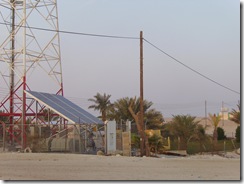Much of the success of individual vendors shall depend on the technology choices they are currently making. Given the pace of change and the pressure of competition, it is an arena with an extremely narrow margin for error. Alcatel-Lucent opens the doors to its Bell Labs research facility in Villarceux to showcase the innovations it is backing
André Méchaly says Alcatel-Lucent’s emphasis on innovation is helping carve niches out for the vendor in a competitive market
Alcatel-Lucent’s next generation networks strategy is based on three pillars, the success or failure of which is likely to ultimately determine the company’s fate.
High Leveraged Network
100G is central to the Alcatel-Lucent High Leverage Network (HLN) architecture, which addresses the dual challenges of simultaneously scaling and managing network capacity while delivering differentiated, revenue-generating services. It achieves this by delivering scalable bandwidth at the lowest cost per bit and by embedding intelligence in the network to enable dynamic service creation and delivery. The HLN architecture is at the foundation of the Alcatel-Lucent Application Enablement vision. It collapses multiple complex, costly overlay networks into a simpler, fully optimised network that leverages technical innovations and embraces existing environments. Comprehensive transformation services provide additional business, network and service delivery support to de-risk, accelerate and monetise network evolution.
Application enablement
Application Enablement is an industry vision and network approach that combines the trusted capabilities of network operators and the speed and innovation of the web to provide end users and enterprises what they demand: a richer and more trusted web experience and beyond.
Alternative Energy Programme
Announced in February 2009, the aim of the Alternative Energy Programme is to address the challenge that more than 100,000 mobile base stations shall be equipped with alternative energy solutions between 2010 and 2012, representing a yearly savings of about seven million tonnes of carbon dioxide. The programme aims at providing the first truly industrial solution of wireless base stations powered with alternative energies, ready for large deployments. Leveraging its ‘Sustainable Power’ services suite, Alcatel-Lucent provides consulting to help operators build a comprehensive deployment plan tailored to their specific environment, and then manages design, dimensioning, installation, transformation and integration of the entire network.
Thus the programme helps service providers meet their need for reliable and sustainable power for remote locations. Benefits include new subscribers, lower operating costs, and a reduced carbon footprint.
“Our green solutions combine solar, wind and electricity,” said André Méchaly, marketing and communications VP in Alcatel-Lucent Mobile Access Division. “It has already been rolled out in Qatar with Vodafone and has a direct and sizeable impact on power generation,” he added.
Jean Luc Beylat, chairman of Alcatel-Lucent Bell Labs France is adamant that power management is not telcos’ core business and as such it makes sense for Alcatel-Lucent to act as a kind of systems integrator to the service provider community.
“Dynamic power saving is an important element of Alcatel-Lucent’s alternative energy offering and does not impact the quality of service provided to subscribers, either at night, nor during high-traffic periods,” Beylat said. “Because it is a software upgrade, this enhancement can be installed on all Alcatel-Lucent multi-standard base stations deployed since 1999, accounting for some 500,000 stations.”
Jean Luc Beylat says that Alcatel-Lucent is in a position to act as a kind of systems integrator to the service provider community
Dynamic Power Save capability involves switching off the power amplifier in GSM transceivers. It enables the base station to monitor traffic activity on the network and when there is no information to transmit, even for very short periods of time, the amplifier is switched off.
Alcatel Lucent’s work in the area of HLN is aimed at achieving huge throughput speeds that can be applied to data centres and transmission between routers. While still some years off from achieving 100Gbps, Alcatel-Lucent’s ongoing investment in the area is helping the company in the development of short- as well as long-distance applications.
The development of small cells and flat cell networks is another area of investment by Alcatel-Lucent. The company’s femto cells solution offers several important Bell Labs innovations, including self-organising and self-optimising network (SON) technology.
“Seamless handover between cells is crucial. So long as it’s over IP, handover should have no impact on the application,” said Méchaly. Alcatel Lucent is undertaking a second implementation of ultra flat small cell networks, having completed the first just a few months ago. The technology provider continues to look at the solution as a future demand driver.
Alcatel-Lucent is also dedicating resources to the combating of the mull effects of Robot Networks (Botnets), a jargon term for a collection of software agents, or robots, that run autonomously and automatically. Botnets are most commonly associated with malicious software, but can also refer to a network of computers using distributed computing software. Thus Alcatel-Lucent is focussed on the development of security risk solutions on the network rather than on the device.
While a great deal of the work occurring at Bell Labs in Villarceux is in relation to hardware, the research facility is also developing applications that are able to take advantage of the higher bandwidth offered my modern communications networks. The ‘s-book’ is a concept displayed by Alcatel-Lucent that combines the functions of an e-book online, with social networking components. 
Vodafone Qatar’s hybrid powered base station uses an integration of solar and wind energy
Mobile augmented reality solutions, which combine 3-D virtual objects integrated into a 3-D real environment in real time, are also an area of interest for Alcatel-Lucent and it has collaborated on this development with Dekaps. It is an application that displays information associated with the image picked up by a smartphone’s camera or uses the orientation of the phone itself to identify tagged items nearby and displays information about those items. As with other augmented reality systems, Dekaps can provide not only location-based information but also a virtual layer of information based on the recognition of an image.
Dekaps is set to become available on Apple apps by the end of summer.






0 comments ↓
There are no comments yet...Kick things off by filling out the form below.
Leave a Comment